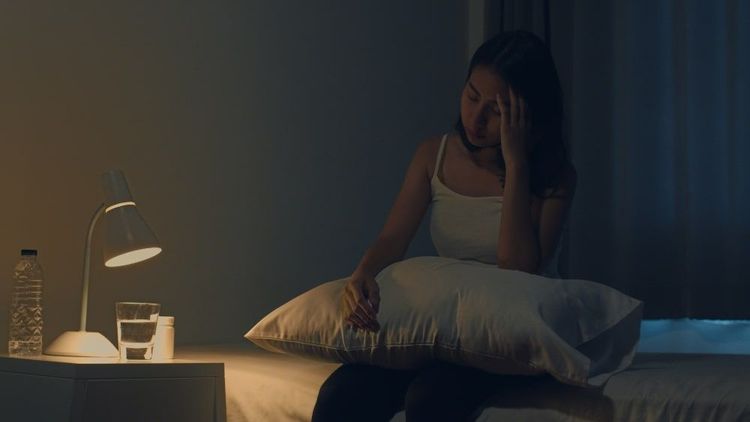There’s a reason so many people lie awake at night staring at the ceiling. Stress builds up, screens overstimulate, and the brain struggles to slow down. Even when the body is tired, the mind often keeps running. Many turn to pills, podcasts, or sleep apps, but there’s another option hiding in plain sight—crafts.
Crafts aren’t just about making pretty things. They engage the hands, focus the mind, and offer a rhythm that encourages calm. Psychologists often point to creative activity as a gentle form of meditation. When practiced at night, it can ease the transition from daytime stress to bedtime relaxation.
In this article, we’ll explore 5 crafts that can help you sleep better. Each section explains not just how to try them, but also why they work. Whether you’re a seasoned crafter or someone who hasn’t touched a crayon since school, you’ll find a practice that fits.
Color or Create a Mandala Using Repeating Symbols or Nature Patterns
The soothing power of mandalas
Mandalas have long been used in cultures around the world as tools for focus and balance. Their repeating, symmetrical patterns naturally draw the eye inward. As you color or create one, the outside world fades away. The steady movement of hand to paper keeps the brain engaged while preventing overthinking.
How to get started
You don’t need fancy supplies. Print a free mandala online, buy a simple coloring book, or sketch your own repeating design. Choose colors that feel calm—blues, greens, earthy browns. The key isn’t perfection. It’s the steady act of filling spaces with color. Let the shapes guide you. Let the repetition lead your thoughts into rhythm.
Why this helps with sleep
Late-night phone scrolling stimulates the brain with bright light and constant novelty. Coloring a mandala does the opposite. It slows thought patterns, reduces stress hormones, and helps the body recognize it’s time to rest. Over time, your brain may begin associating this ritual with sleep itself, making the act even more effective.
Visual Journaling or Sketching
Expressing emotions without words
Some nights, the problem isn’t restlessness—it’s unspoken thoughts. Visual journaling offers a way to release them. Instead of writing full sentences, you let drawings, doodles, and abstract shapes tell the story. The act of putting emotions on paper removes them from the mind, leaving space for calm.
Building a bedtime journaling habit
All you need is a notebook and a pen or pencil. Before bed, open to a blank page and ask yourself, “What do I feel right now?” Then, sketch without judgment. A swirl of lines, a simple face, or even rough shapes can represent how you feel. This isn’t about artistry; it’s about transfer. What sits in the head moves to the page.
Benefits for sleep quality
Racing thoughts are among the most common barriers to rest. By sketching them out, you trick the brain into believing the job is done. The mind feels lighter, and sleep comes easier. Over time, your journal becomes both a record of your inner world and a tool for nightly peace.
Repetitive Handwork (Weaving, Knitting, or Braiding)
Why repetition matters
Humans are wired to find comfort in rhythm. Think about rocking chairs or lullabies—they soothe through repetition. Crafts like knitting, weaving, or braiding tap into that same instinct. Hands repeat gentle motions, and the nervous system mirrors the calm.
Simple ways to try repetitive crafts
Start with a small project. A scarf, a simple bracelet, or even just rows of knitting with no end goal. Use soft fibers that feel pleasant in the hands. Work under warm lighting, maybe with calming music in the background. Ten minutes is enough. Focus on the process, not the product.
Linking handwork to better rest
People often say their thoughts won’t stop at night. Repetitive handwork gives those thoughts something steady to follow. Each stitch or weave provides a gentle anchor. Eventually, the mind slows down to match the rhythm of the hands. That’s when sleep becomes much more natural.
Mindful Clay Sculpting
The grounding effect of clay
There’s something deeply calming about working with clay. It’s heavy, earthy, and tactile. Unlike a screen or a notebook, clay requires full engagement of touch. The act of molding, pinching, and smoothing is inherently grounding. It brings you back into the body, away from digital distractions.
Easy clay exercises before bedtime
Take a small ball of air-dry or natural clay. Roll it in your hands, form simple shapes, and allow your fingers to explore. You don’t need to “make” anything. The process is the point. Some find comfort in rolling smooth spheres, others in flattening discs, others in free-form abstract shapes.
Why sculpting promotes relaxation
Stress isn’t just mental—it lives in the body. Clay sculpting lets you release it physically. Tension in the hands, wrists, and shoulders often eases as the clay moves. By the time you stop, your muscles are looser, and your body is ready to sink into bed.
Guided Imagery with Drawing
Bringing calm to paper
Guided imagery is often used in meditation or therapy. It asks you to imagine a calming scene, such as walking a quiet beach or lying in a meadow. When combined with drawing, it becomes more immersive. You don’t just picture peace—you create it on paper.
How to practice it
Find a guided imagery recording or think of a place that makes you feel safe. Close your eyes, imagine the details, then open them and sketch. Don’t aim for realism. Use colors, lines, and textures to capture the feeling. A soft blue wash might represent the sky; curved lines could suggest gentle waves.
The impact on sleep
This practice essentially rewires the mind at bedtime. Instead of rehashing the day’s problems, you’re building a peaceful scene. That scene becomes your mental anchor as you drift to sleep. The drawing itself also serves as a physical reminder of calm, reinforcing the association each night.
Conclusion
Crafts may seem like small, simple hobbies, but their effects on sleep are powerful. Each one—whether mandalas, visual journaling, handwork, clay sculpting, or guided imagery—offers a pathway to rest. They engage the senses, calm the mind, and signal the body that it’s time to slow down.
You don’t need talent, expensive supplies, or hours of time. You need only a willingness to experiment. Try one craft for a week and notice the difference. Often, the hardest part is simply replacing late-night scrolling with something slower. Once you experience the shift, you’ll likely look forward to these rituals.
Remember, sleep isn’t just about shutting down. It’s about preparing both body and mind for rest. With these five crafts, bedtime becomes less of a struggle and more of a transition into peace.




